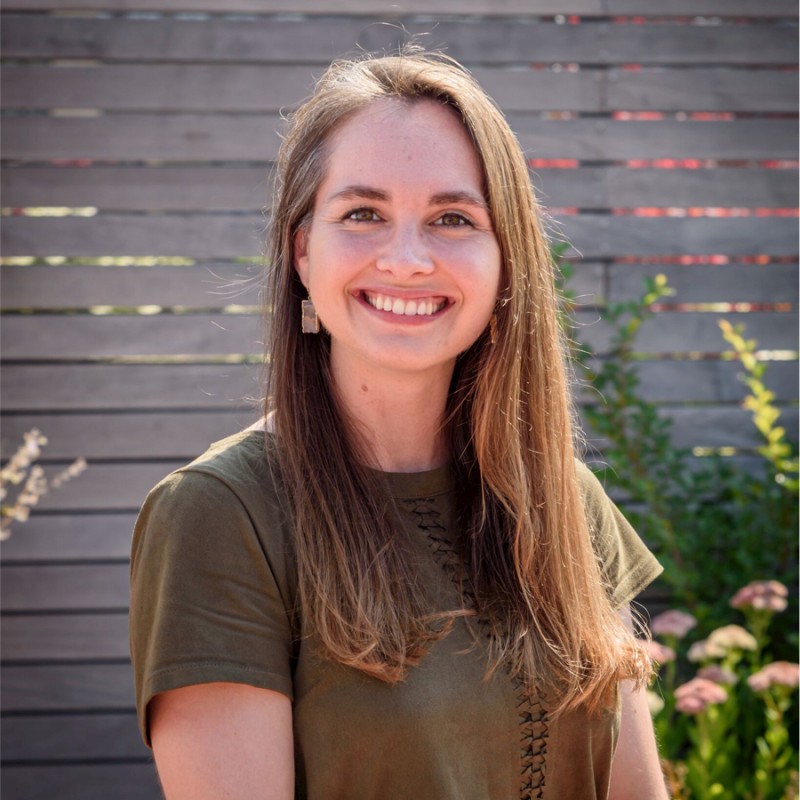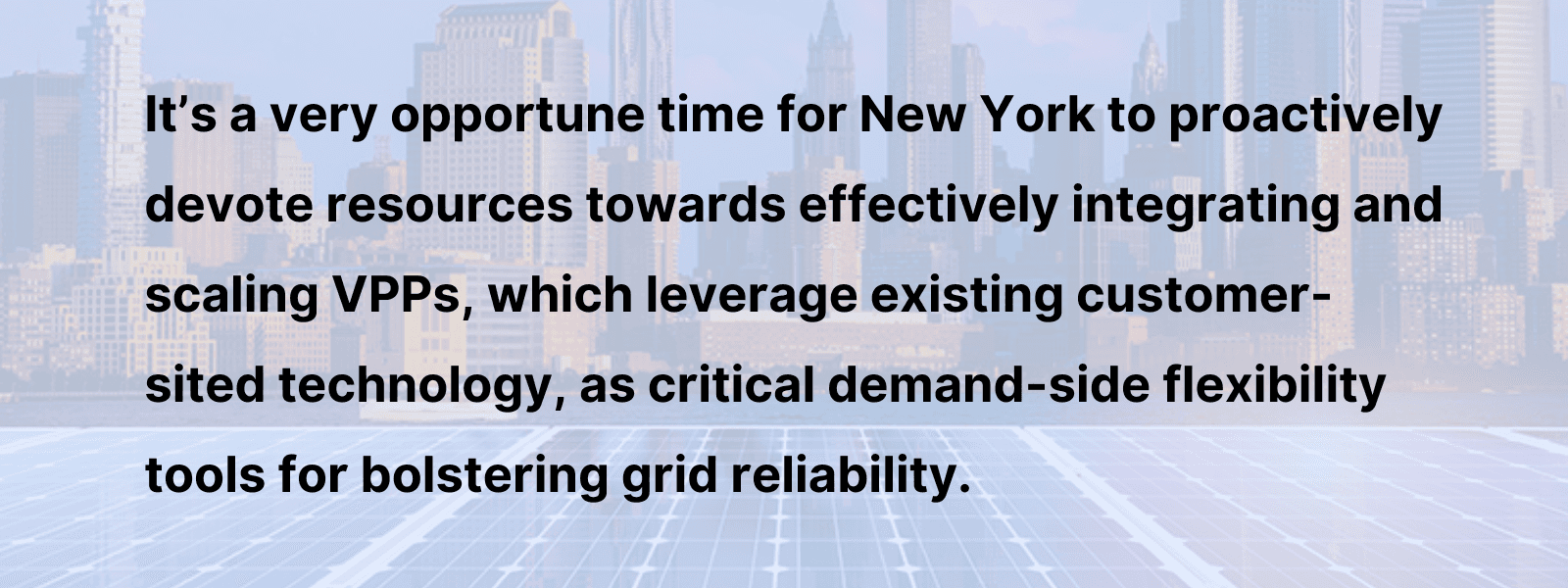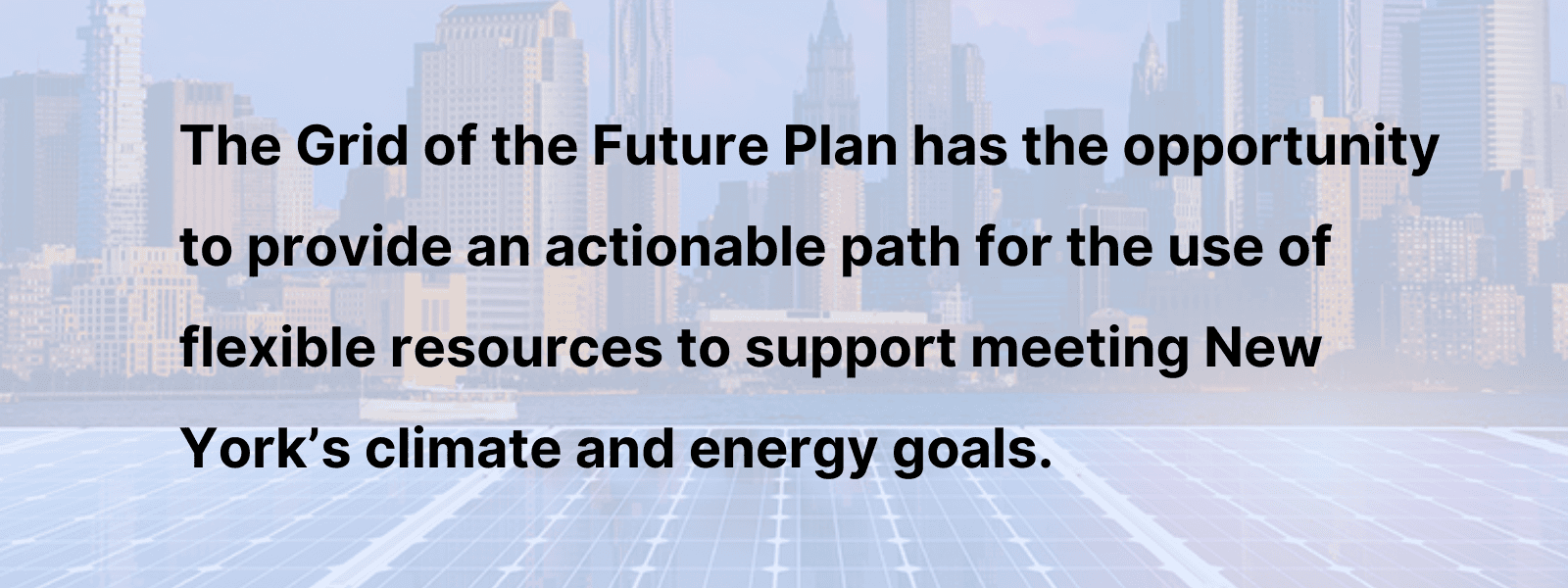September 30, 2024

Kim Mashke, Regulatory Affairs Manager
Kim Mashke, Regulatory Affairs Manager

Kim Mashke, Regulatory Affairs Manager
The threat of rising electricity demand is a common theme across the U.S., and New York is no exception. Earlier this month, the New York Independent System Operator (NYISO) presented updated draft results for its 2024 Reliability Needs Assessment (RNA), which warned of potential statewide reliability violations by 2034 (or earlier, in some scenarios), driven by “increasing demand, large loads, and assumed gas unavailability.”
However, when final Base Case results were presented last week, the outlook for reliability criteria during the 10-year study horizon improved, primarily for one specific reason: it now includes treatment of certain large loads as flexible resources during peak load conditions. This increasing reliance on load flexibility to address reliability concerns underscores the power of robust demand-side solutions in New York.

Unlocking the vast potential of Virtual Power Plants (VPPs) can be a tremendous asset to the types of reliability challenges that utilities, grid operators and regulators are facing. New York has ambitious climate goals, and reaching them will require enormous amounts of new intermittent large-scale renewable and transmission capacity, both of which are costly and can involve lengthy development timelines.
In other words, it’s a very opportune time for New York to proactively devote resources towards effectively integrating and scaling VPPs, which leverage existing customer-sited technology, as critical demand-side flexibility tools for bolstering grid reliability.
There are a variety of reasons that explain why New York has become a leading state for VPP development, including the advancement of secure customer data access initiatives like New York State Energy Research & Development Authority (NYSERDA)’s Integrated Energy Data Resource (IEDR) effort, complementary distribution and wholesale programs and regulatory and legislative momentum supporting the expansion of distributed resource deployment, particularly electric vehicles, solar and storage.
Two recent developments in 2024 highlight the bright future ahead for VPPs in New York.
NYISO DER Model goes live
In April 2024, the NYISO received Federal Energy Regulatory (FERC) approval to launch its DER Participation Model, which has been under development since well before FERC Order 2222 was released in 2020. This groundbreaking model clears a pathway for small-scale DERs to fully participate in both the day-ahead and real-time energy markets, and provides a single access point for streamlined participation in the energy, ancillary and capacity markets. While the program is a major stride in the right direction, a couple key barriers remain that pose a challenge for harnessing the full potential of VPPs within the state’s wholesale market:
10 kW minimum
Among the series of proposed revisions accepted by FERC is a 10 kW minimum capability requirement for individual DERs within an aggregation. This minimum was widely contested by stakeholders, including Leap, because it effectively excludes households from participating and accessing this new revenue stream at a time when residential adoption of clean energy technologies such as electric vehicles, storage and smart thermostats is accelerating across the state.
The NYISO pointed to constrained staffing and systems to facilitate participation from resources <10 kW, and explained that a significant delay in the DER Model launch date would be necessary to remove the requirement. After issuing two deficiency notices, FERC sided with NYISO to avoid further delays. FERC directed the NYISO to submit an informational filing within two years that includes its views on the feasibility of the participation of DERs smaller than 10 kW, once the NYISO has gained insights from administering the model. Additional discussions with stakeholders will also take place in the meantime.
Telemetry requirements
Real-time telemetry requirements were also accepted by FERC, which presents another significant barrier to entry for small-scale, behind-the-meter clean technology owners. Telemetry systems enable the remote transmission and measurement of data from energy devices. The NYISO is not alone in requiring telemetry; ISO-NE has imposed a similar requirement on aggregated DERs as well.
However, while real-time telemetry is necessary for operational visibility purposes for large-scale generation resources, it can be overly burdensome for small-scale resources and too costly to implement for many households. Moreover, other wholesale markets successfully support programs without these requirements in place, including CAISO and PJM. Further discussions regarding alternative telemetry methodologies are expected to take place in 2025.
Governor Hochul initiates Grid of the Future Proceeding
Separately - but also in April 2024 - the Hochul administration launched the “Grid of the Future” proceeding. This initiative aims to unlock innovation and investment to deploy flexible resources, such as VPPs, by establishing a clear set of needed grid capabilities and targets for deployment, identifying the required investments to effectuate those targets and identifying the anticipated customer benefits and savings achievable from meeting those targets. The scope of this proceeding is the most specific forum for addressing advantages and hurdles for VPP growth at the state-regulation level.

Next Steps for the Proceeding
New York Department of Public Service (NY DPS) Staff is expected to issue a Grid Flexibility Study by November 15, 2024 to assess the present and future capabilities of flexible resources and recommend methods for effectively integrating them into grid planning under a range of different scenarios.
From there, the first iteration of a Grid of the Future Plan is anticipated by December 31, 2024, with a second iteration filed by December 31, 2025. The Grid of the Future Plan has the opportunity to provide an actionable path for the use of flexible resources to support meeting New York’s climate and energy goals, including identifying the extent to which new market access and compensation methods are necessary for effective participation in the NYISO markets.
Championing the Future of VPPs in New York
Leap plays an active role in advocating for DERs of all shapes and sizes to have the opportunity to maximize their contribution toward state climate goals. As promising developments like the NYISO DER Model and the Grid of the Future Order take shape, securing fair compensation for participants remains a core component of Leap’s New York advocacy.
VPPs participating with Leap in New York can earn up to $200/kW-year, and above in some cases. Interested in a custom value analysis for your New York DERs? Get in touch.
Interested in advocating to expand DER participation opportunities in New York? Reach out to our Regulatory Affairs team to discuss priorities and avenues to plug into future feedback.
Leap is enthusiastic about the strong focus on expanding VPP capabilities throughout New York’s electricity system. We applaud the efforts to prioritize innovation by opening doors to a greater VPP presence within the state, and encourage continued collaboration with the VPP industry to achieve shared goals of decarbonizing the state’s electric grid while enhancing grid reliability at both the distribution and wholesale levels.
